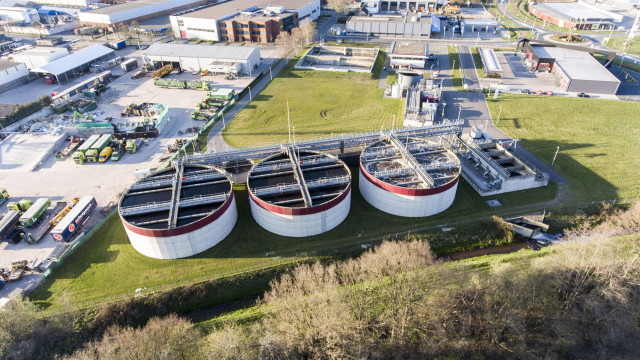Schneider Electric and Royal HaskoningDHV transform wastewater treatment with next-generation automation platform
Innovative automation and process control to improve plant process efficiency, and sustainability through complete lifecycle management
Based on the IEC61499 standard for interoperability, the integrated solution has been successfully tested and validated through Royal HaskoningDHV’s rigorous certification process. Developers, operators, and system integrators can improve all aspects of the water treatment process, from design and construction to operations and maintenance. The benefits are clear:
·Treatment plants can realize up to a 50% improvement in engineering deployment
·30% optimization on commissioning
·and 10% savings on optimized, robust architectures.
“We have made it our mission to lead the way in next-generation sustainability and digital transformation in water, and in doing so are constantly seeking to join forces with innovative and complementary partners,” said Alain Dedieu, President of Water and Wastewater at Schneider Electric. “With Royal HaskoningDHV we can deliver a future-proof, digital solution for wastewater treatment, providing access to next-generation process controls that combine the best of our automation technologies with Royal HaskoningDHV’s transformative Nereda platform.”
“By using EcoStruxure Automation Expert, the time spent on integrating and testing control software for Nereda installations will reduce significantly,” said Jelle Langedijk, Process Engineer at Royal HaskoningDHV. “The standardized application makes it straightforward to troubleshoot and adapt processes to customer-specific configurations. The easy-to-use Schneider Electric Human-Machine Interface (HMI) is ultimately a robust solution for industrial applications.”
EcoStruxure™ Automation Expert is enabling Nereada plant operators to leverage IT/OT convergence, expanding their monitoring reach, and ultimately reducing unplanned downtime with easier and faster troubleshooting.
“For the first time, experts in both the IT and OT domains can see exactly the same cyber-physical system, but from their own distinct viewpoints,” said Harry Forbes, Industry Analyst at ARC Advisory, in the analyst’s paper The Road to Universal Automation. “This is possible because the production system (in the OT view) has been mapped onto a set of standardized IT resources. Once this is achieved, the IT and OT disciplines will be able to collaborate at an entirely new and higher level and the advanced software tools and technologies of IT can be effectively leveraged at all points of the manufacturing process.”
“The main benefit to this much higher level of IT/OT convergence should be reduced unplanned downtime, which ARC believes now costs the industry about $100 billion annually. Presently, the responsibility for monitoring and diagnosis of the production automation systems falls entirely on the OT staff. In the future, the work can be shared. IT experts will provision, monitor, and manage the system resources (compute, networking, storage, etc.) while production experts will manage and optimize the actual production operations.”
Website: https://www.se.com
Contact
For Schneider Electric Energy & Sustainability Services
THE SPRING COMPANY
Kwon Jihye
+82-2-796-1092
Send Email
This news is a press release provided by Schneider Electric.



